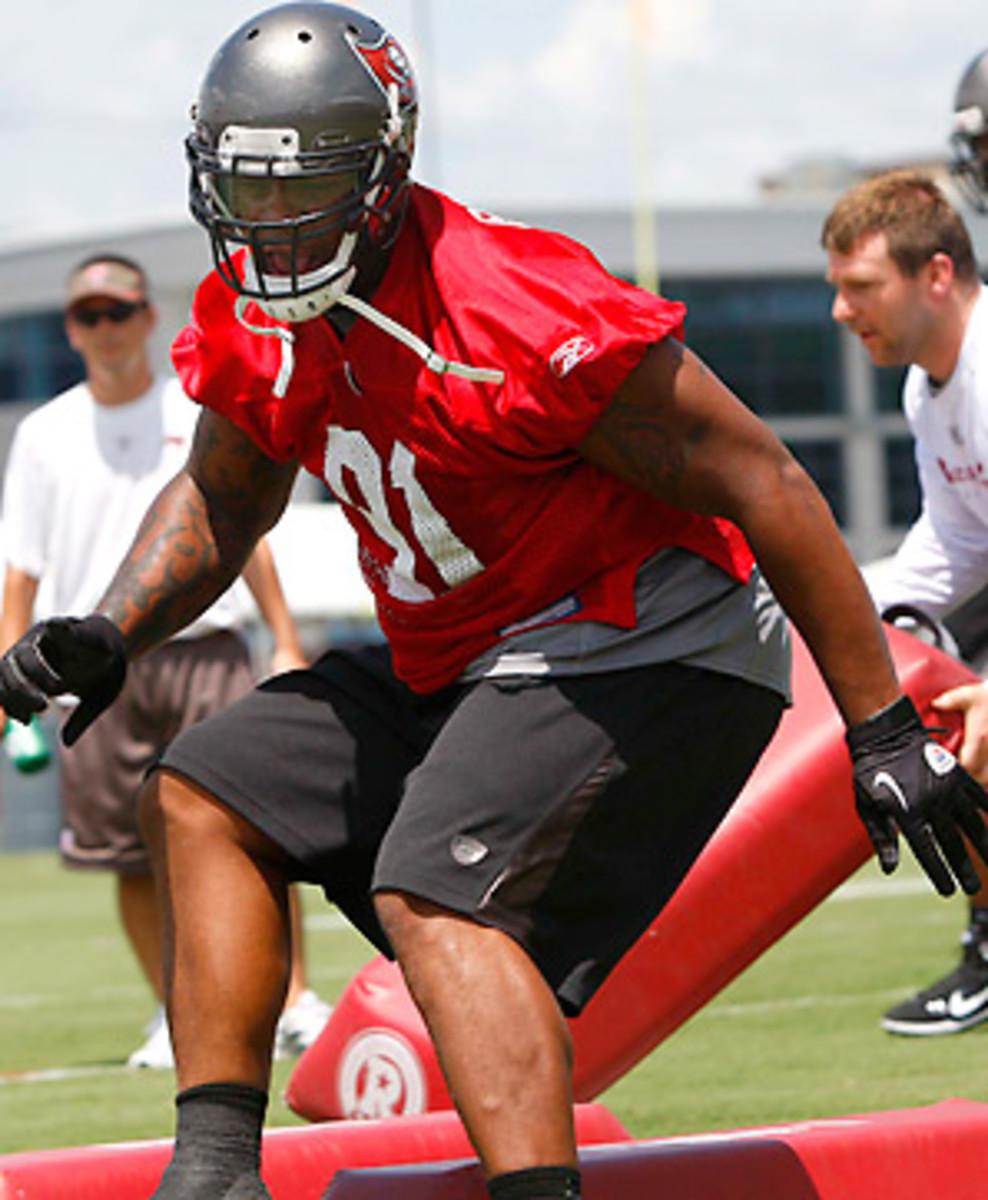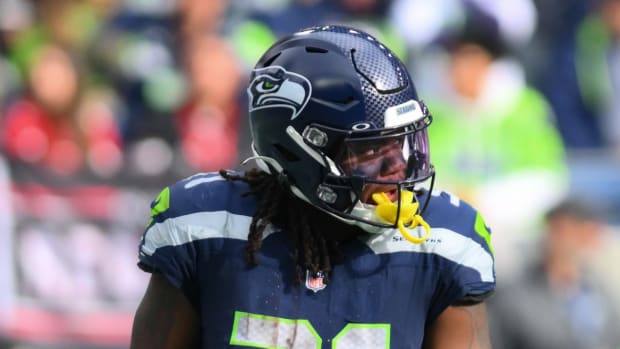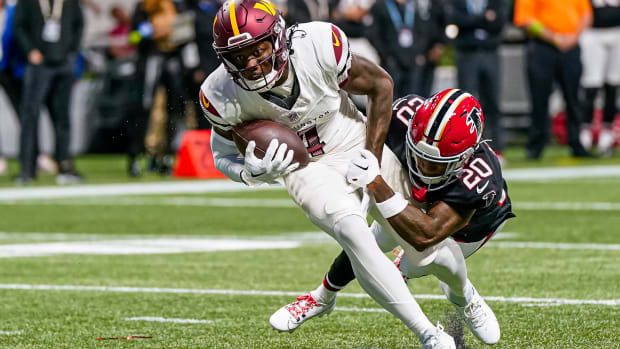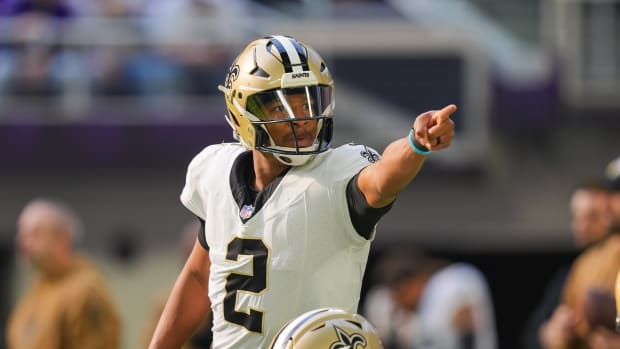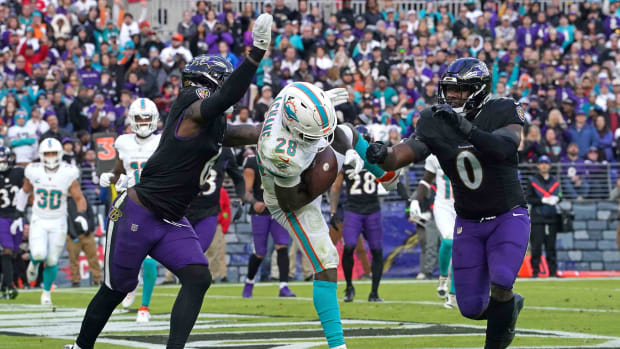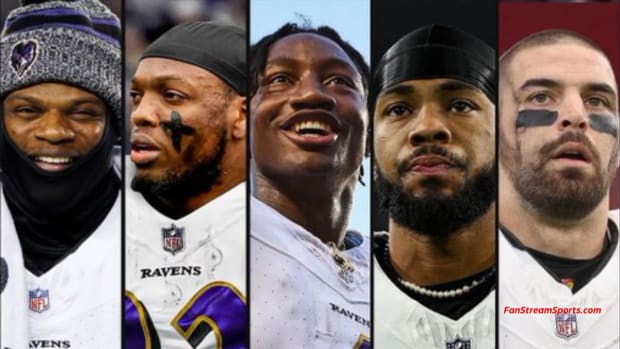By getting younger, Bucs hope defense can live up to old days
Not only was the club riding the wave of the league's biggest turnaround -- the Buccaneers went 3-13 in '09 -- but also had 59 million ways (as in available salary cap dollars) to upgrade the roster.
Did someone say, "Nnamdi Asomugha?"
A lot of people outside Buccaneers headquarters said it, but the name of one of the game's premier cornerbacks -- the No. 1 free agent on the market surely would have helped a defense in need of playmakers -- never seriously came up inside Dominik's office.
"The way we've been building this football team ... I think there's a blueprint that's already sitting in front of you," Dominik said. "We're going to follow it."
The schematics of the plan are simple, actually. After years of running in place under coach Jon Gruden with a revolving door of veteran free agents and stop-gap journeyman quarterbacks, the Buccaneers committed three offseasons ago to blow everything up and start anew. After gutting the roster of veterans -- including iconic linebacker Derrick Brooks -- ownership turned the personnel side over to Dominik, at 37 the youngest GM in the league, and the coaching to Raheem Morris, at 33 the youngest head coach in the league, and charged the two with building a team through the draft.
The plan's foundation was laid by selecting quarterback Josh Freeman in the '09 first round, and things sort of took off from there, with an 0-7 start and that 13-loss mess of two years ago a distant memory.
In 2010, Freeman was the centerpiece of a stunning reversal buoyed by a roster stockpiled by young and hungry players -- "Youngry," Morris likes to say -- with attitude that matches the passion of their excitable/likable coach. Veteran free agents already in the house and who fit the new Buc way were the focus of Dominik's free agency. He brought back a handful of restricted free agents, then locked up some key unrestricted ones, including offensive guard Davin Joseph (seven years, $53 million) and outside linebacker Quincy Black (five years, $29 million), in keeping true to the blueprint. Only punter Michael Koenen, by way of Atlanta, was signed from another team.
"Our talent evaluator knows how to pick 'em," Freeman said.
Last year's Buccaneers not only won seven more games than the season before, but also won five of them with fourth-quarter comebacks engineered by Freeman (25 touchdowns, just 6 interceptions), the club's first true franchise quarterback since Doug Williams. They did it with a running back (undrafted LeGarrette Blount, 1,007 yards in eight starts) and wideout (fourth-rounder Mike Williams, 964 yards, 11 touchdowns) who became the first teammates in 42 years to lead all rookies in rushing and receiving yards, respectively. They did it with 20 different rookies playing over the course of the season; 10 started at one point, the most by a team since the NFL-AFL merger in 1970. Tampa Bay finished the year with 23 rookies on a 53-man active roster that went on the road and defeated the reigning Super Bowl champion New Orleans Saints.
Guess what? The Buccaneers figure to be younger this year.
And they expect to be better.
"It's enthusiasm and constant energy," Morris said of his preseason roster that boasts nearly 70 players with three years of NFL experience or less. "We've got 90 guys in that locker room and when I walk through there it's really hard for me to see a guy and think, 'Man, I can't wait to cut him!.' That's rare. It's a bunch of guys I just love to be around. This whole thing has got a kind of a college feel."
Maybe that's because so many of his players are barely of legal drinking age; not that anyone in pewter and red sees that as an excuse.
"It doesn't matter if you have freshmen playing ... or rookies, I mean," Freeman shrugged. "Whatever."
With the offense in good, young hands with Freeman and friends, Dominik used the 2011 draft to fortify a defense that ranked near the bottom of the league (28th) at stopping the run and in sacks (30th). Tampa Bay selected Iowa defensive Adrian Clayborn in the first round and then was stunned to see Clemson defensive end Da'Quan Bowers, who led the nation in sacks with 16, still available in the second round at No. 51. In January, Bowers was among the prospects being talked about as the No. 1 overall choice when the all-star game and combine season began, but knee surgery sent his stock plummeting.
"Thirty-one teams passed on me. Ten d-ends were taken ahead of me," Bowers deadpanned with the seriousness of the debt crisis. "I never would have imagined that could happen. Now, I'll never forget it."
The Buccaneers have deemed Bowers' knee to be sound, but they're working him cautiously in camp. The plan is for Bowers to line up as the starting left end and Clayborn, who in '09 had 11 1/2 sacks and last year captained the No. 6 defense in the nation, at right end. The hope is that more pressure off the edges will be what second-year defensive tackle Gerald McCoy, the No. 3 overall pick in '10, was missing during a struggling rookie season. Roll in rookie third-round pick Mason Foster at middle linebacker, too. Foster is a high-motor hitting machine out of Washington and is projected to be the starter by the opener, thus he's the one making the defensive calls and getting teammates in position.
McCoy and Clayborn are 23. Foster is 22. Bowers is 21. Roy Miller, the starting nose tackle, is a graybeard at 24, but the Buccaneers also remain high on Brian Price, their second-round pick last year, at that spot. Price was injured most of last year and played just five games. He's 23.
No wonder Morris gets that college feel around these guys.
"We're the ones they're expecting to impact this defense, so it all has to start up front," said McCoy, who had 28 tackles, three sacks and two forced fumbles before a biceps tear ended his season in Week 14. "We can change the game."
For years, the Buccaneers were famous (at times infamous) on defense, with Warren Sapp, Derrick Brooks and John Lynch crushing ballcarriers on their way to Pro Bowls each year. Everything about those great units of the late-'90s and into the 2002 Super Bowl championship run and beyond started with execution and disciplined assignment football in the front seven.
"From what I know, it hasn't been the same since those big boys were here," Clayborn said. "We know it's not going to be easy. I mean, I haven't played a snap in the NFL yet. But that's where we want to be again."
That's where an identity for disruption needs to be forged.
"There will be no guessing or trying to figure out the identity of the Tampa Bay Buccaneers on defense," McCoy said. "It'll be clear cut."
That change has been under way for a few years now, but on a much larger scale. It started at the top with a young executive and young head coach. Now, everything about the Buccaneers is young.
Almost.
"Youth is infectious," 36-year-old cornerback Ronde Barber said.
When his 15th season commences next month, Barber will make his 184th consecutive start (most in NFL history by a defensive back), all of them with Tampa Bay. He arrived as a rookie in 1997 and was there when the Buccaneers built that championship-caliber defense around Sapp, Brooks and Lynch.
"We just kept adding cogs to the engine until eventually it was this powerful machine. Then we went on a run that was perennial," Barber said. "I'm not saying we have those types of players yet. Those types of players have to be developed. We're doing that."
The difference with those old Buccaneers teams and the latest version is that the cogs are showing up on both sides of the ball.
The young guys running the show have a plan.
"Our goal is to never have to go outside our building," Dominik said.
It's an ambitious goal, but it just might be working. Check it out. The blueprint, after all, is right in front of you.
































